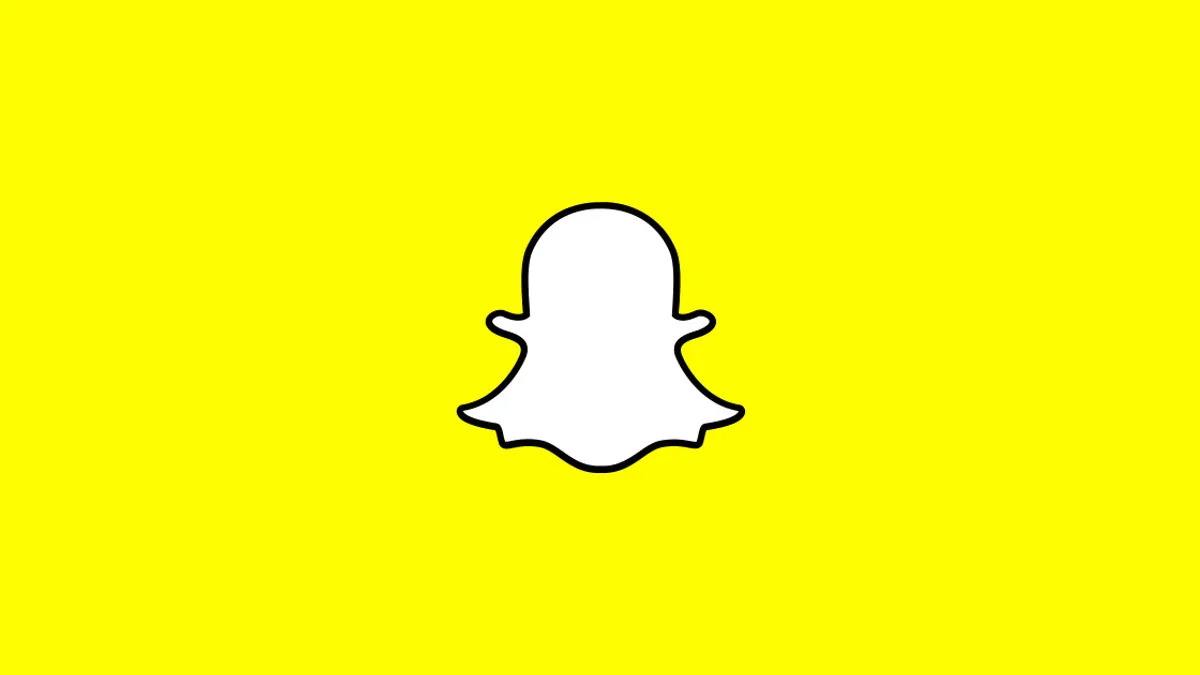Dive Brief:
- Snap's revenue surged 66% from a year earlier to $769.6 million in Q1 as photo-messaging app Snapchat saw 22% growth in daily average users (DAUs) to 280 million. The app added 15 million DAUs during the first three months of the year, including 12 million outside the U.S. and Europe where it has the most users, per an earnings announcement.
- More than 125 million Snapchat users last month watched videos on Spotlight, the app's TikTok-like feed of user-generated content that was expanded worldwide. Snap estimated its revenue for Q2 will be in the range of $820 million to $840 million, or 80%-85% higher than the $454 million it saw in Q2 2020.
- Several brands launched notable campaigns on Snapchat during the quarter as the pandemic limited and changed consumer behaviors. Gucci sponsored the first augmented reality (AR) lens with LiDAR technology to promote The North Face x Gucci collection. American Eagle's AR lens showed different styles of jeans for direct purchase, while fitness company Sweat's lens tracked body movements to recommend improvements to exercise routines.
Dive Insight:
Snap's revenue growth outpaced the gains in its user base, indicating stronger demand among marketers for advertising that engages Snapchat's younger-skewing consumers. About two-thirds (65%) of U.S. consumers ages 18 to 29 said they use Snapchat, compared with 24% of people ages 30 to 49, according to Pew Research Center. That adoption rate makes Snapchat almost as popular as Facebook and Instagram among the youngest adults. For marketers that seek to reach younger consumers, Snapchat has emerged as a more significant platform.
Snap management touted Snapchat's features that have helped brands to engage with homebound consumers who have avoided going to stores during the pandemic. Those features include its branded AR lenses, which were increasingly adopted by advertisers seeking to showcase products.
Snap expects adoption of AR shopping to grow, Jeremi Gorman, chief business officer of Snap said, according to the transcript for a conference call with analysts. The executive cited a study the company commissioned from consulting firm Deloitte that found 94% of people expect to use AR for shopping the same or more in 2022 than they will this year. Luxury brand Dior saw a return on ad spend (ROAS) of 6.2 times from an AR lens that let Snapchat users virtually try on pairs of its B27 sneakers. Eyeglasses marketer Zenni Optical saw an ROAS of 7.9 times on a shoppable AR lens experience it sponsored for Valentine's Day, Gorman said.
"We believe firmly in performance-driven advertising, and continue to scale our measurement tools and goal-based bidding capabilities that allow advertisers to optimize for the objectives they are trying to achieve," Gorman said. "We continue to see over half our revenue come from direct response campaigns."
She cited TechStyle Fashion Group as a brand that used Snap's goal-based bidding (GBB) to drive measurable returns. TechStyle's direct-to-consumer (DTC) brands saw a cost per purchase rate that was 25% less than its goal in Q1, and plans to spend more on Snapchat advertising this year, Gorman said. Adidas Canada used Snap's dynamic ads format to target shoppers as part of the sportswear brand's always-on e-commerce strategy, and an incremental ROAS of 4.4 times, she said.
Snap has worked to adopt Apple's SKAdNetwork, which is the tech giant's solution to help measure conversion rates of app install campaigns without sharing user data. Apple next week will introduce its App Tracking Transparency (ATT) feature in the software that runs iPhones, iPads and Apple TV boxes, a move that has worried advertisers since the company announced the plan last summer. Advertisers that represent a majority of Snap's direct response advertising revenue have implemented SKAdNetwork for their campaigns, Gorman said.
Snap also has targeted consumer packaged goods (CPG) brands with a special program to onboard them on Snapchat. Yogurt brand Yoplait participated in Snap's CPG Fast Track program with a campaign that used its Snap ads and lenses formats. The campaign resulted in new buyers driving almost 30% of incremental sales, while exposure to its AR lens drove more than 40% of incremental sales, Gorman said.














